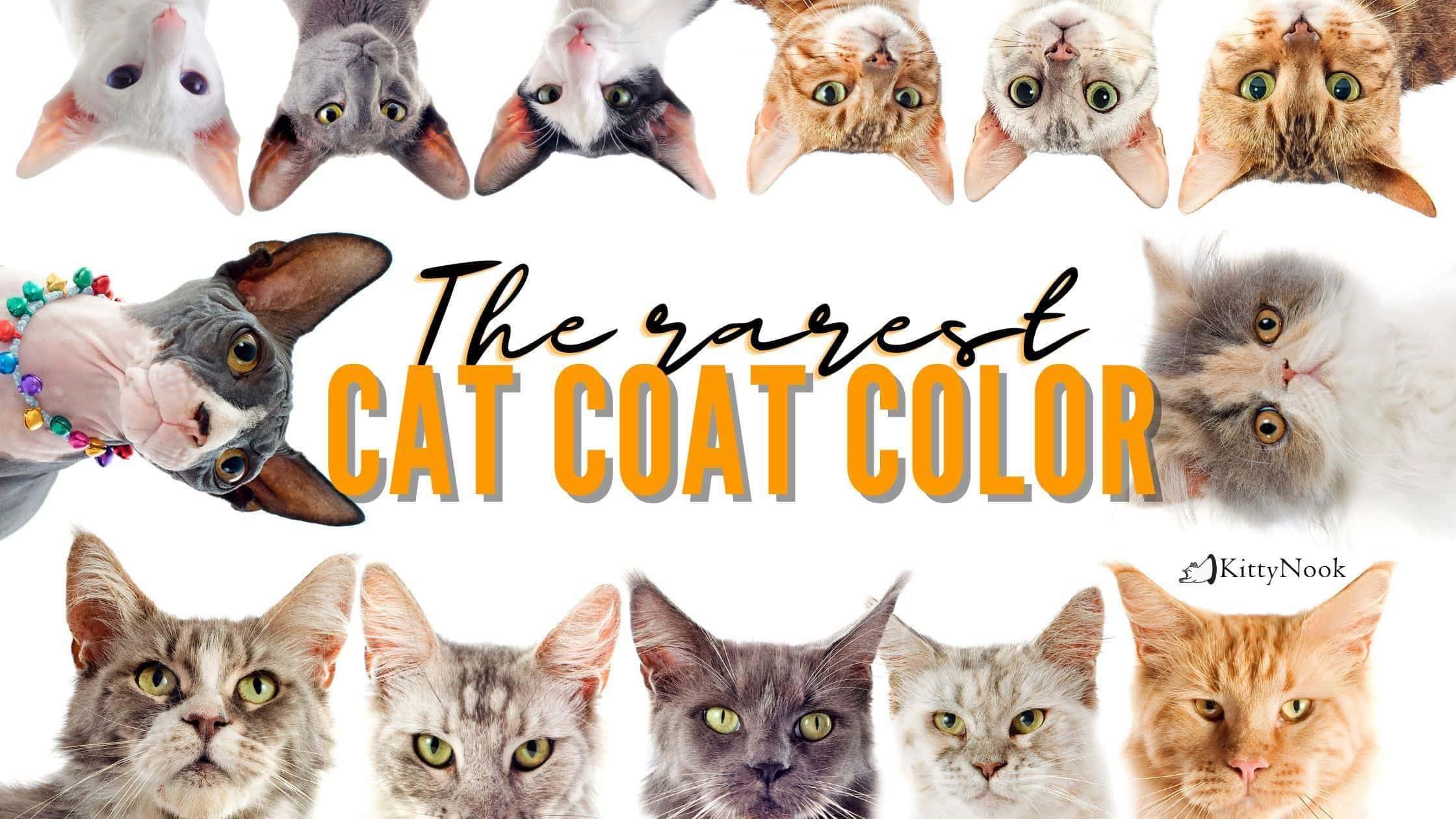Black, white, brown, orange, or a combination of all! Cats come in all shades and patterns that it's tough to pick a favorite.
Cat's exciting colors are embedded within its DNA, and some variations seem to be priceless and incredibly unique. The following are the top 9 most rare coat colors and patterns in cats. Can you pick a favorite?
It's All In The Genes
Before we get to the pool of different colored cats, it is essential to discuss the causes of these different shades, patterns, and textures. The color of our cats depends on the interaction of at least five genes. Similarly, the layers and/or patterns are formed by added genetics. Completely unrelated genes cause the texture and length of coats. The genetics of cat coats is so complicated that we are continually in the process of discovering brand-new information about it. This blog will only mention some involving the rarest coat colors and patterns in cats.
Coat Colors
1. Chocolate

The chocolate (or brown) coat color is encoded by a recessive allele b of the primary gene for coat color (B/b/b1). The dominant variation of this gene, (B), is the code for black coats. Because (B) is a dominant allele, it's naturally more common than the brown coat. For a cat to appear in this rare color, the cat needs to carry two recessive alleles for chocolate coloration (b/b). The chocolate coat's intensity and the pattern will be formed by other coat-related genetics.
2. Cinnamon

Like the chocolate coat, the cinnamon is likewise encoded by the primary gene's recessive allele (b1) of the coat color (B/b/b1). Like in the chocolate coat, a cat has to be homozygous for this gene (b1/b1) for the cinnamon color to show. This is why it's a lot less common than black hair. The intensity and pattern of the cinnamon layer will be further shaped by other coat-related genetics.
3. Fawn

The fawn shade is a variation of the cinnamon shade. It is determined by the recessive gene b1 of the primary gene for coat color (B/b/b1). It is then weakened by the dense pigment gene (D/d). The formation of this shade is similar to that of the smoke and lilac shades. For a cat to be fawn, it needs to be a recessive homozygote for coat color's primary gene (b1/b1). Being a recessive homozygote for the dense pigment gene (d/d) is also required.
4. Smoke

The smoke coat color is a variant of the black color. The primary gene for coat color determines it (B/b/b1). It is then weakened by the dense pigment gene (D/d). The recessive allele of the same dense pigment gene (d) then changes other color-associated genes' expression. This results in a "watered-down" pigmentation. For a cat to have the smoke-color, it needs to carry the dominant allele for the primary gene coat color (B/B, B/b, or B/b1). It likewise needs to be a recessive homozygote for the dense pigment gene (d/d).
5. Lilac

The lilac color is a variant of the chocolate color, making it rarer still. This coat color is determined by the recessive allele b of the primary gene for coat color (B/b/b1), then diluted by the dense pigment gene (D/d). The system of formation of this shade is similar to that of the smoke color. For a cat to be lilac, it needs to be a recessive homozygote for the coat color (b/b). It likewise has to be a recessive homozygote for the dense pigment genetics (d/d).
6. Cream

The cream coat color is a variant of the orange color. This color is determined by the red gene (O/o) diluted by the dense pigment gene (D/d). The red gene is located on the X chromosome (this is why all ginger cats are males). This gene determines whether there will be any red variations to the coat colors or otherwise—the dominant allele O codes for orange tones. The formation of this shade is similar to that of the "watered-down" shades described above. For a pet cat to be cream, it has to carry the red gene (O/O or O/o). Then it has to be a recessive homozygote for the dense pigment gene (d/d).
Coat Patterns
7. Chinchilla

The chinchilla coat pattern is the silver-tipped pattern in which the hairs' bases are faded (just half of each hair or the pointers are pigmented). This is the outcome of the melanin inhibitor gene (I/i). The dominant allele of this gene (I) reduces eumelanin production, which dilutes the base of solid coats in cats (making them silver smoke). This transform tabbies right into that shiny silver color while leaving the stripes intact. The chinchilla pattern is the tabby affected by this melanin inhibitor gene. This causes only the very ends of the hair to be colored.
8. Color-point

The color-point pattern is typically connected with Himalayan and Siamese cats. Although it is true that the color-point happens to non-related cats, this very rarely happens. The "pointed" pattern is a kind of partial albinism triggered by a mutation in the gene that codes for tyrosinase. This is an enzyme associated with melanin production (C/c/c1). This enzyme's mutated variation is heat-sensitive, which means that it fails to work at normal body temperature levels. It activates just in cooler parts skin (lower than 91.4°F). Therefore, the coolest areas of a cat's body, such as its extremities and face, will show darker pigmentation versus the rest of the body.
9. Rosette pattern

The rosette pattern is likewise known as the "spotted" tabby pattern. The agouti gene determines this. This is a rarer variant of the tabby pattern. It also is frequently observed among Bengals, Serengeti's, Egyptian Maus, Arabian Maus, and Maine Coons.
At Kittynook, we love pet cats of all shapes, colors, and patterns. We honestly cannot pick a favorite because every cat is beautiful in their own way! Does your cat have one of the coat colors or patterns? Please show us your cats on social media by using #kittynookco!





















